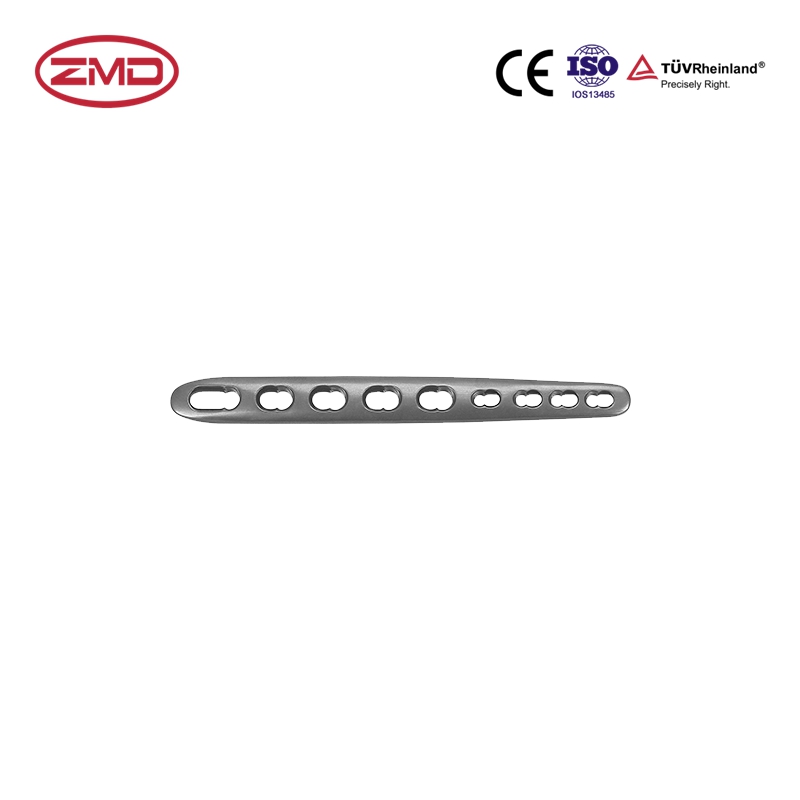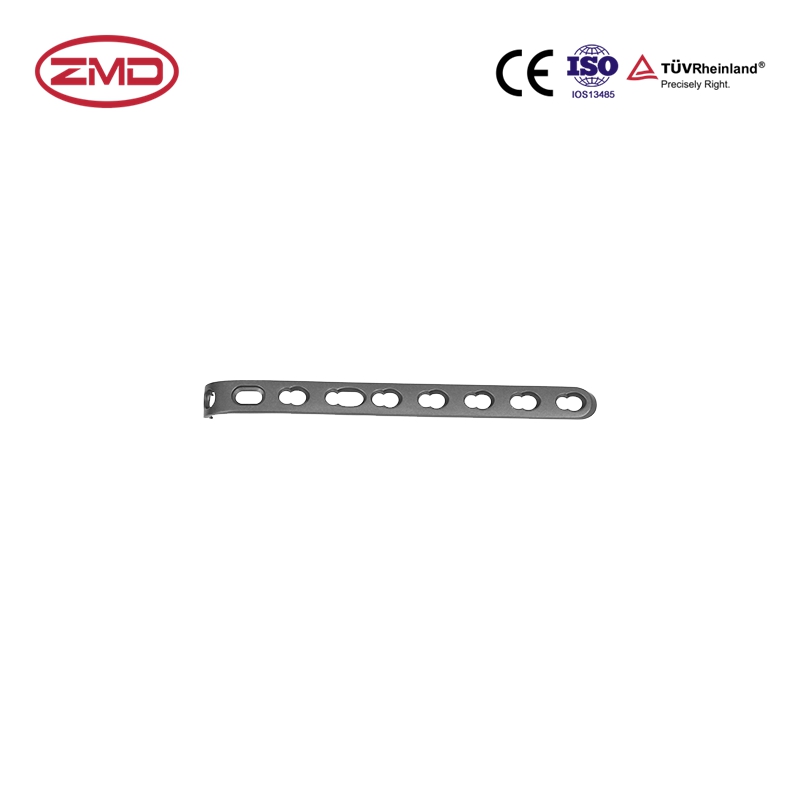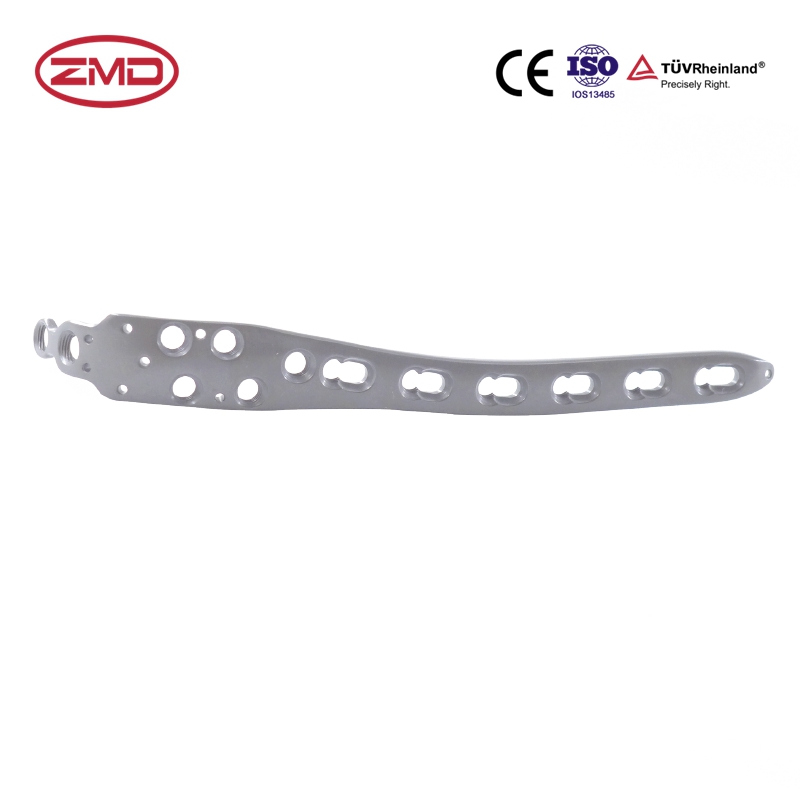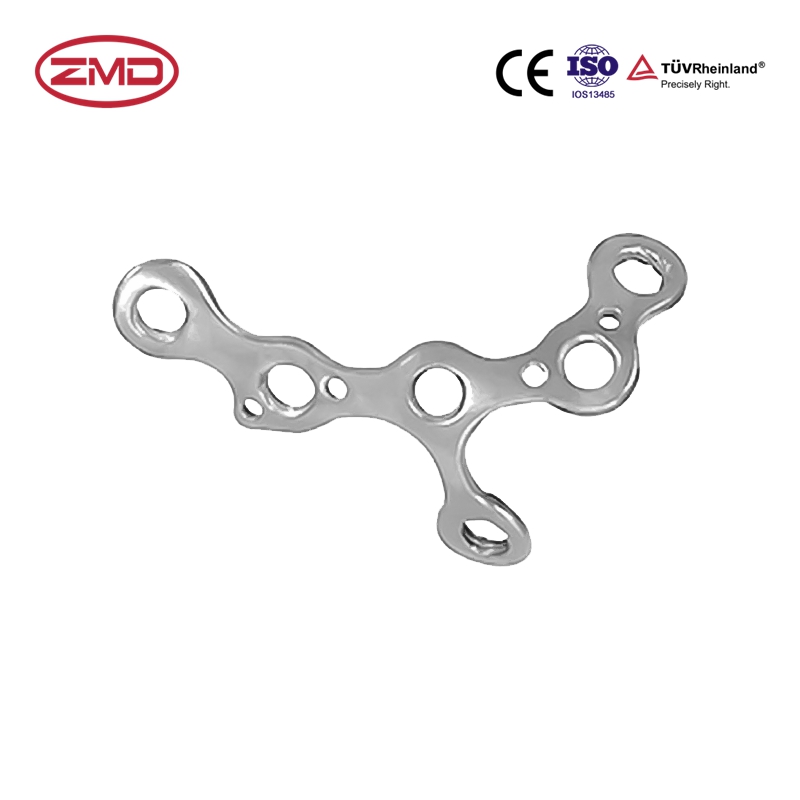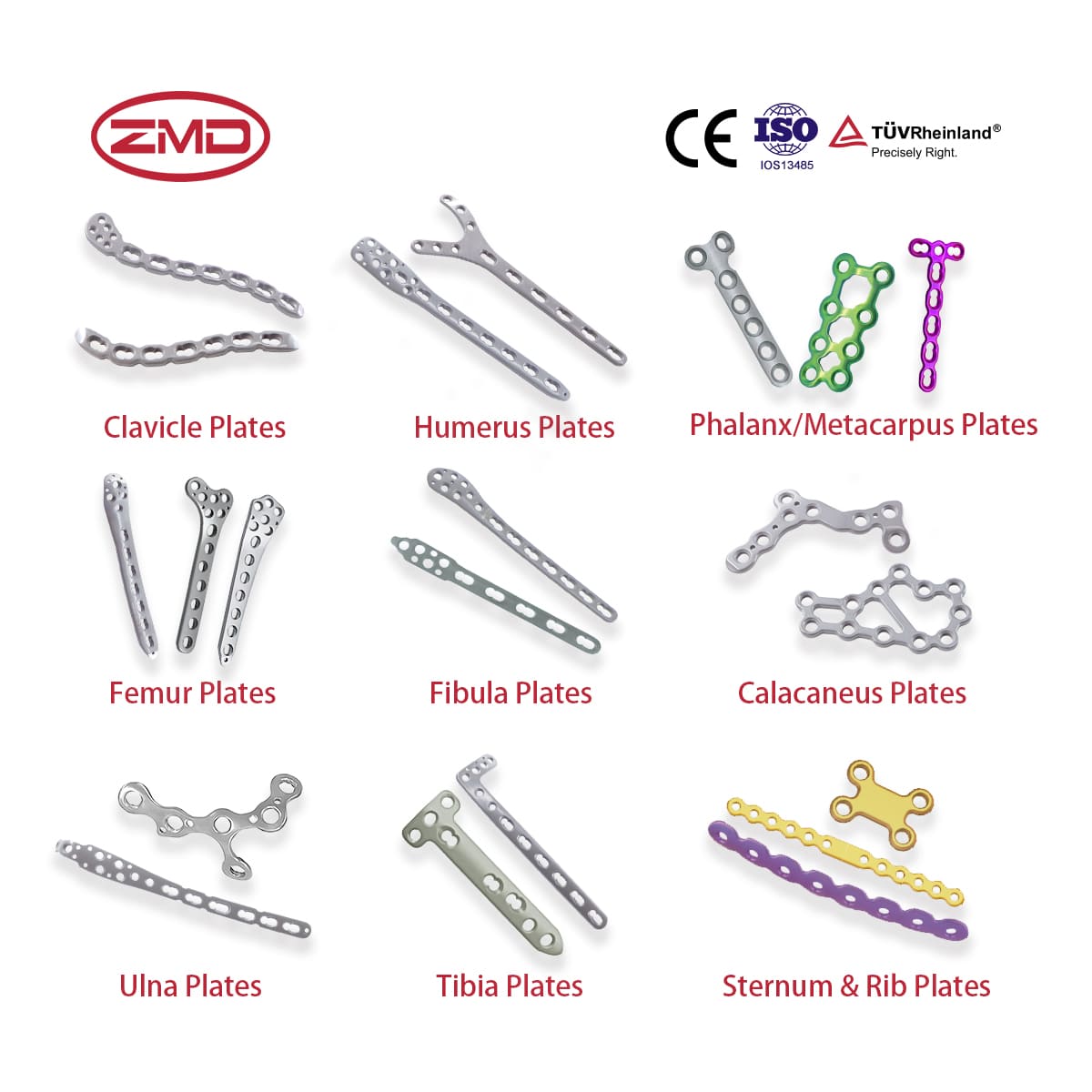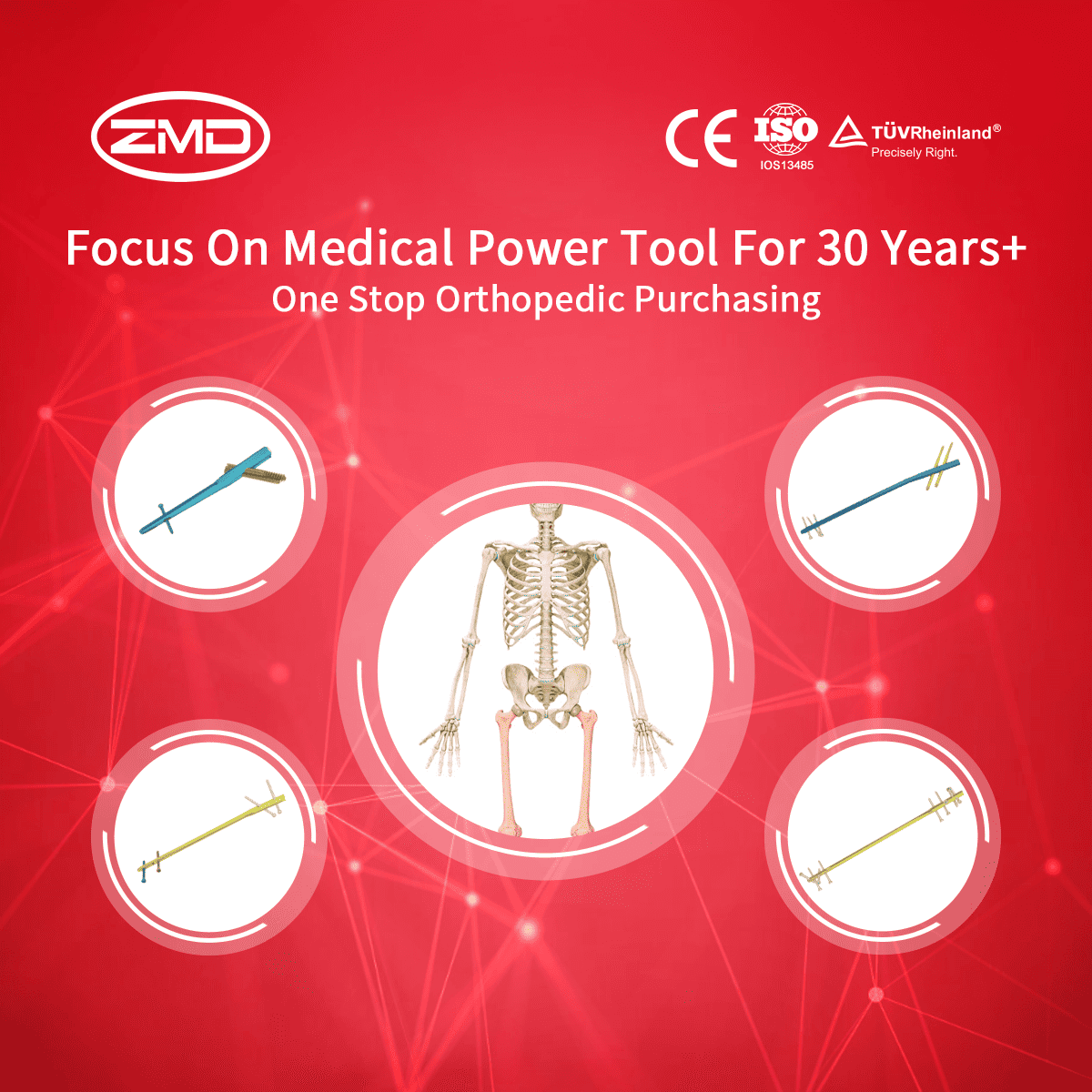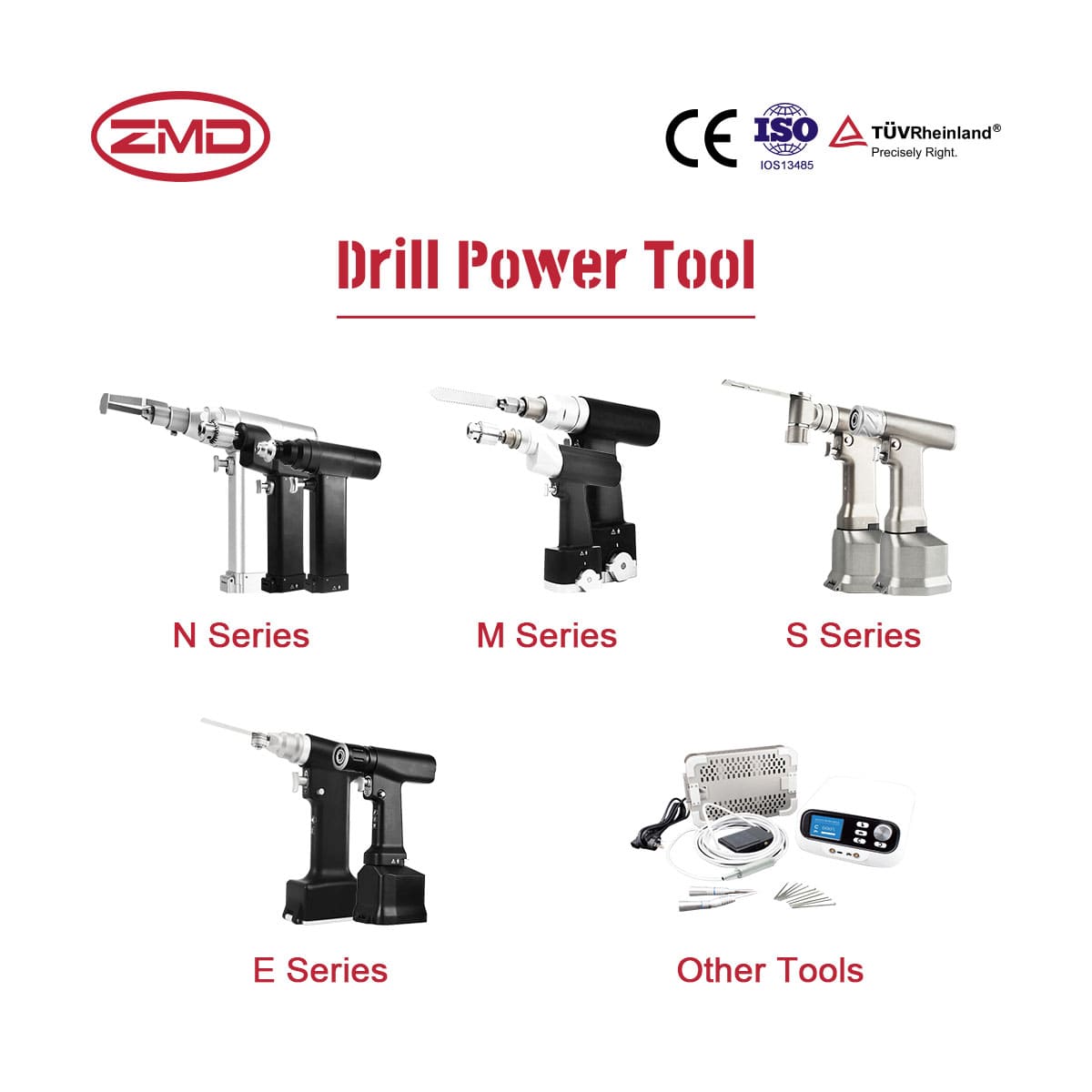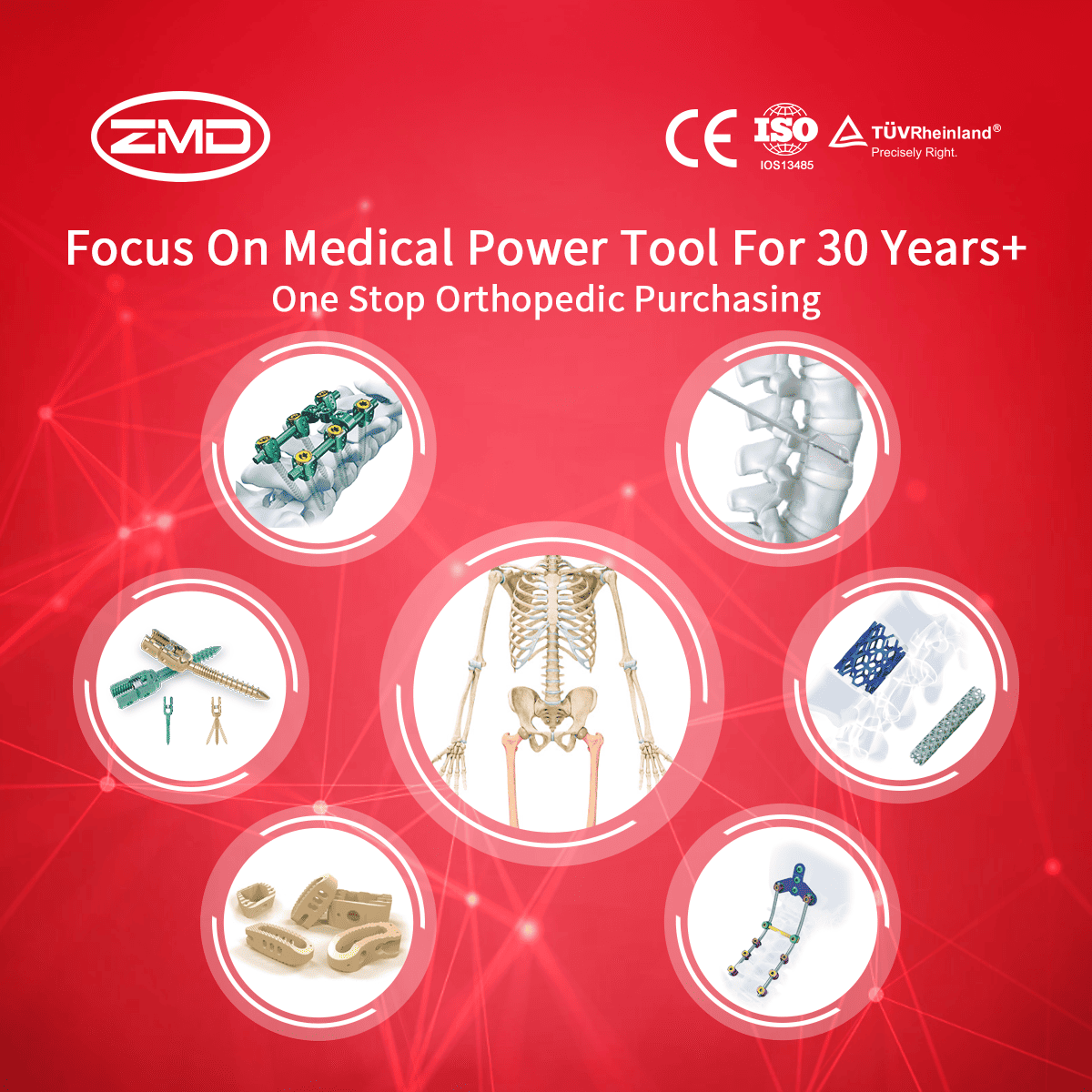Locking System
ZMD
Orthopedic Products
Haven't been able to locate the product you're searching for yet?
If you're interested in more orthopaedic implant products, feel free to get in touch with our ZMD consultants.
What are Bone Locking Systems?
Bone locking systems are internal fixation devices for bone fractures and osteotomies. They have a threaded connection between locking screws and the plate, creating a fixed – angle construct. This offers enhanced stability, better load transfer than non – locking plates, reduced soft – tissue trauma through minimally invasive insertion, and is well – suited for osteoporotic bones.

Types of Bone Locking Systems
- Multiaxial Locking System: It enables screws to be inserted at multiple angles. This flexibility is particularly useful in complex fractures, as it allows surgeons to adapt the fixation according to the specific anatomy and alignment needs of the fractured area.
- Mini Locking System: Specifically designed for smaller bones like those in the hands and feet. Given the delicate nature and smaller size of these bones, this system provides appropriate fixation while minimizing damage to surrounding tissues.
- Locking Plate System: The most commonly used type, it’s applicable to a vast variety of fractures. It offers reliable fixation and stability, making it a go-to choice for many orthopedic surgeons in different fracture scenarios.
- Pediatric Locking System: Tailored for children’s bones which are smaller and more delicate compared to adult bones. It takes into account the unique characteristics of growing bones and provides suitable support during fracture treatment.
- Osteotomy Locking System: Created for use in osteotomies, which involve cutting bone during surgical procedures. It ensures proper fixation and alignment of the bone segments after the cut has been made, facilitating the healing process.
- Sternum & Rib Locking System: Geared towards fractures of the sternum (breastbone) and ribs. These areas have their own anatomical considerations, and this system is designed to address the specific requirements for stabilizing fractures in these regions.

When Are Bone Locking Systems Needed?
Bone locking systems are needed for complex fractures like comminuted fractures (where the bone is in multiple pieces) and fractures with bone loss. They’re also essential for osteoporotic or osteopenic bones, as they provide more reliable fixation than traditional methods.
Comminuted Fractures
Osteopenic Bone
Minimally Invasive Surgery
Fractures with Poor Bone Quality
Fractures in Specific Anatomical Locations
Revision Surgery
Osteotomies
Fractures in Children
Blog
International Women’s Day: Salute to the “She – Power” at ZMD
International Women’s Day: Salute to the “She – Power” at ZMD Amid the trends of “Intelligent Medical Devices” and “Minimally Invasive Medical Technologies”, ZMD thrives
Discover Innovation with Sunan Medical at AAOS
Discover Innovation with Sunan Medical at AAOS The American Academy of Orthopaedic Surgeons (AAOS) Annual Meeting is the premier event for orthopedic professionals worldwide, offering
Visit Us at Expomed Eurasia 2025: Discover Sunan Medical’s Innovations
Visit Us at Expomed Eurasia 2025: Discover Sunan Medical’s Innovations The 32nd Expomed Eurasia, taking place from April 24-26, 2025, at the Tüyap Exhibition and




